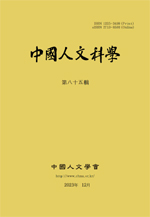학계에서는 최근 몇 년 동안 유행한 대부분의 인터넷 언어에 대해 전문적인 언어 해석을 내놓았지만 '我佛了'라는 유행어에 대한 구체적인 연구는 아직까지 나오지 않았다. '我佛了'는 원래 '我服了' 방언의 해음에서 발전했으며 널리 퍼진 인터넷 유행어로 전파 과정에서 끊임없이 자기 복제를 수행하고, 심지어 의미적 변화까지 발생했으며, 또한 성공적인 언어 밈(meme)으로도 볼 수 있다. 따라서 본문은 주로 밈학(memetics)을 사용하여 '我佛了'의 생성, 전파 및 변이 과정을 분석하고 인터넷을 풍미하는 이유를 탐구하며, 또한 '我佛了'과 관련된 두 개의 인터넷 유행어인 '我x了'와 '佛'을 예로 들어 밈 조합에 대한 간단한 탐색을 수행하여 밈학 연구에 새로운 관점을 제공하려고 한다. 본 논문은 분석법, 귀납법, 설문조사법 등의 방법을 종합적으로 사용하여 '我x了'와 '佛' 및 '我佛了'의 세 가지 밈과 그 관계를 연구한다. 연구를 통해 '佛', '我佛了' 등 밈의 발전 과정과 추세를 정리하고, 동시에 사용자들의 '我佛了' 밈의 의미 이해 상황에 대한 설문조사를 실시하였다. 또한 '我佛了'가 인터넷 유행어라는 점을 고려하여 주로 웨이보, 더우반, 카페 및 기타 인터넷 소셜 플랫폼과 다양한 뉴스 사이트를 어원으로 사용하고 북경언어대학교 BCC 현대 중국어 코퍼스 및 기타 코퍼스와 결합하여 어원을 수집하였다.
Most of the popular Internet languages in recent years have been interpreted in linguistics, but there has not been any linguistic research on the catchphrase “I Buddha”.“I-Buddha” originally evolved from the dialectal homophony of “I-Buddha”, and as a widely-spread Internet buzzword, it is self-replicating and even semantic variation, which is also a successful linguistic meme.Therefore, this paper will analyze the process of generation, propagation and variation of “I Buddha” and explore the reasons for its popularity on the Internet. This paper comprehensively uses methods such as analysis, induction, and questionnaire to study the relationship between three memes: “wo X le”, “fo” and “wo fo le”. Through the study, the development process and trend of memes such as “fo”, “wo fo le” were summarized, and at the same time, a survey was conducted on the status of users’ understanding of the meaning of “wo fo le” memes. In addition, considering that “wo fo le” is an internet buzzword, Weibo, Douban, cafes and other internet social platforms and various news sites were mainly used as etymology, and the etymology was collected by combining it with BCC Modern Chinese Corpus and other corpus of Beijing Language University.
Ⅰ. 绪论
Ⅱ. 各模因分析
Ⅲ. 模因组合探析
Ⅳ. 结论
(0)
(0)
